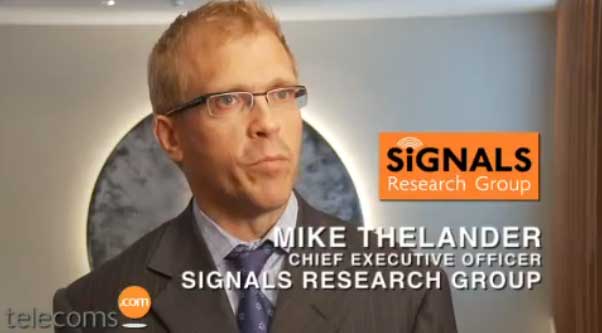As Nordic LTE champion TeliaSonera prepares to launch 4G services in Sweden’s second largest city, Gothenburg, telecoms.com caught up with Mike Thelander, CEO of Signals Research, who has first hand experience of LTE through his drive testing of the TeliaSonera LTE network in Stockholm.
June 29, 2010

As Nordic LTE champion TeliaSonera prepares to launch 4G services in Sweden’s second largest city, Gothenburg, telecoms.com caught up with Mike Thelander, CEO of Signals Research Group, who has first hand experience of LTE through his drive testing of the TeliaSonera LTE network in Stockholm.
Thelander talked about the high growth in data usage as a main driver for LTE adoption, and how the fact that 3G is only just coming into its growth peak means HSPA+ is still important for some operators. Particularly important in US where operators don’t have HSPA so LTE offers a route to meeting growth demands.
“HSPA+ is a good fallback technology for where you don’t have LTE coverage, but even 2G is going to be around for another decade,” Thelander says. “The initial 3G technologies, such as UMTS, were something of a failure so it’s HPSA and HSPA+ that is really driving the industry forward.”
Thelander believes that 2G technologies are excellent at delivering voice services, “So there’s no advantage to putting voice over LTE any time soon. Take a look at Verizon wireless, they have a very robust, very mature network, where quality is very important, so the last thing they want to do is put voice on a technology that’s still proving itself,” he said.
Verizon’s decision to back LTE for 4G is well publicised, but along with the concerns for voice over LTE, Thelander notes that one of the big challenges “Is that there are so many options, so many frequency bands to deploy it in if you look at Japan, the US, Europe.
“Clearly, where you are now seeing LTE deployments is where operators have the spectrum, while operators that are trialling LTE have trial spectrum only, it’s not spectrum they can really use. Or they have 2.6GHz spectrum but they really want Digital Dividend spectrum as well. So one of the things that will slow these operators down is getting hold of the spectrum to deploy LTE in,” Thelander said.
Commenting on the death of the all you can eat data tariff, Thelander says that operators need to be very creative at how they bundle together a package where you’re not giving a subscriber all you can eat data. “You’re charging them for a service. That’s better for the operator and better for the consumer as well. The challenge is that mobile is a whole different story. Cox or any of the other cable operators are seeing tens, hundreds, of gigabytes of data per month on their networks, and that model barely works in a fixed environment, it will fail miserably in a wireless one because you’re always limited in terms of the available spectrum you have,” Thelander says.
Read more about:
DiscussionAbout the Author(s)
You May Also Like








.png?width=300&auto=webp&quality=80&disable=upscale)


_1.jpg?width=300&auto=webp&quality=80&disable=upscale)


.png?width=800&auto=webp&quality=80&disable=upscale)